Maintaining a clean and healthy workspace is essential for productivity and employee well-being. A office cleaning schedule can help establish a structured and consistent approach to keeping your office environment tidy.
In this article, we will explore what a office cleaning schedule is, why it is important, how to create one, tips for successful implementation, and provide some examples to inspire you.
What is an Office Cleaning Schedule?
An office cleaning schedule is a document that outlines the tasks and frequency of cleaning activities required to maintain a clean and healthy workspace. It serves as a visual guide for employees and cleaning staff to ensure that all necessary cleaning tasks are completed regularly and efficiently.
Having a schedule allows for easy reference and tracking of cleaning activities, ensuring that no areas or tasks are overlooked. It can be customized to fit the specific needs of your office and can include tasks such as dusting, vacuuming, disinfecting surfaces, emptying trash bins, and cleaning restrooms.
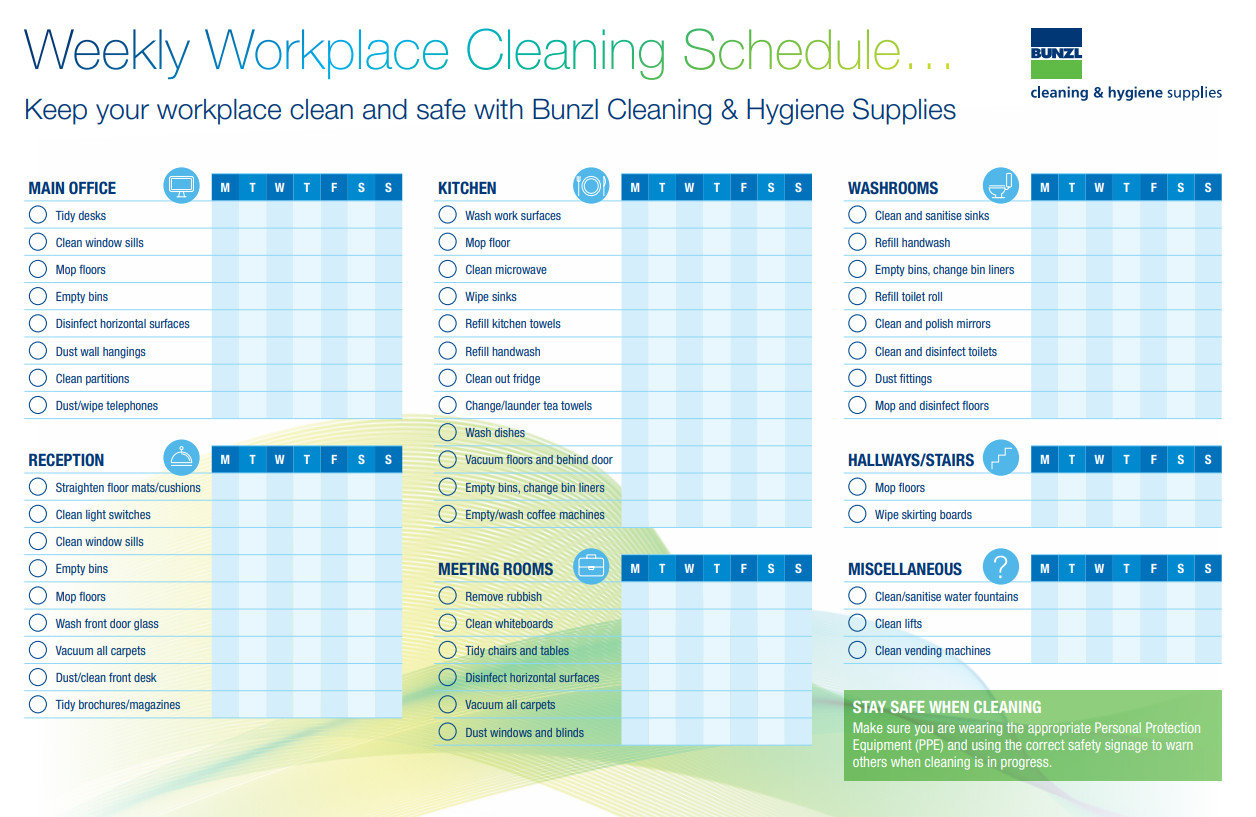
Why is an Office Cleaning Schedule Important?
A clean and organized office environment has numerous benefits for both employees and the overall business. Here are some reasons why an office cleaning schedule is important:
- Health and Safety: Regular cleaning and disinfection help prevent the spread of germs and reduce the risk of illness among employees.
- Productivity: A clean and clutter-free workspace promotes focus and concentration, leading to increased productivity.
- Professionalism: A well-maintained office creates a positive impression on clients and visitors, reflecting professionalism and attention to detail.
- Employee Morale: A clean and organized workspace contributes to a pleasant and comfortable working environment, boosting employee morale and satisfaction.
- Longevity of Office Assets: Regular cleaning and maintenance help prolong the lifespan of office furniture, equipment, and fixtures, saving money on replacements.
How to Create an Office Cleaning Schedule
Creating an office cleaning schedule involves a few key steps. Follow these guidelines to create an effective schedule for your office:
1. Assess Your Office Cleaning Needs
Take a thorough inventory of your office space and identify the cleaning tasks that need to be completed regularly. Consider high-traffic areas, frequently touched surfaces, and specific requirements for different areas such as restrooms, break rooms, and meeting rooms.
2. Determine Cleaning Frequencies
Decide how often each cleaning task needs to be performed. Some tasks may require daily attention, while others can be scheduled on a weekly or monthly basis. Consider the size of your office, the number of employees, and the nature of your business when determining frequencies.
3. Assign Responsibility
Decide who will be responsible for each cleaning task. Depending on the size and resources of your office, you may have dedicated cleaning staff, or you may assign tasks to employees on a rotating basis. Communicate responsibilities and expectations to ensure accountability.
4. Create a Visual Schedule
Design an office cleaning schedule that is easy to read and understand. Use a spreadsheet or create a table with columns for tasks, frequencies, responsible parties, and any additional notes or instructions. Consider color-coding or highlighting important information for clarity.
5. Display the Schedule
Print multiple copies of the cleaning schedule and display them in prominent locations throughout the office. Common areas such as break rooms, restrooms, and near cleaning supplies are ideal spots to ensure visibility and accessibility for all employees.
Examples of Office Cleaning Schedules
Here are some examples of how you can structure your office cleaning schedule:
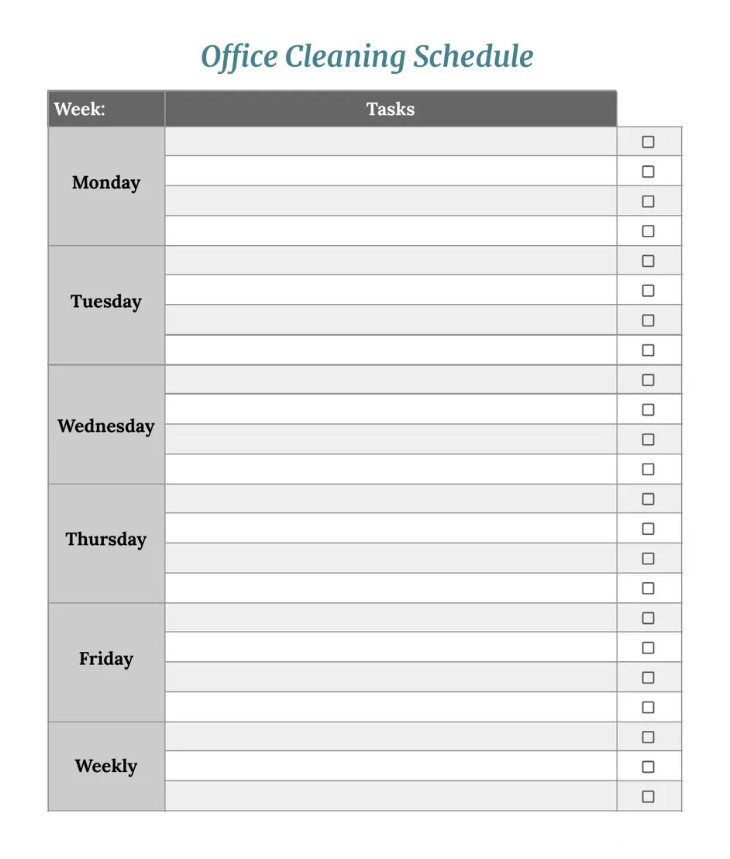
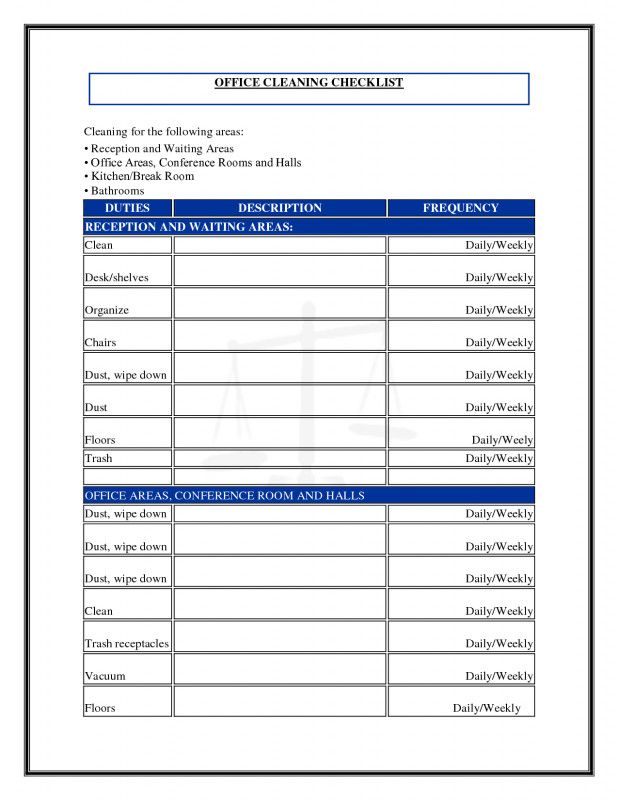
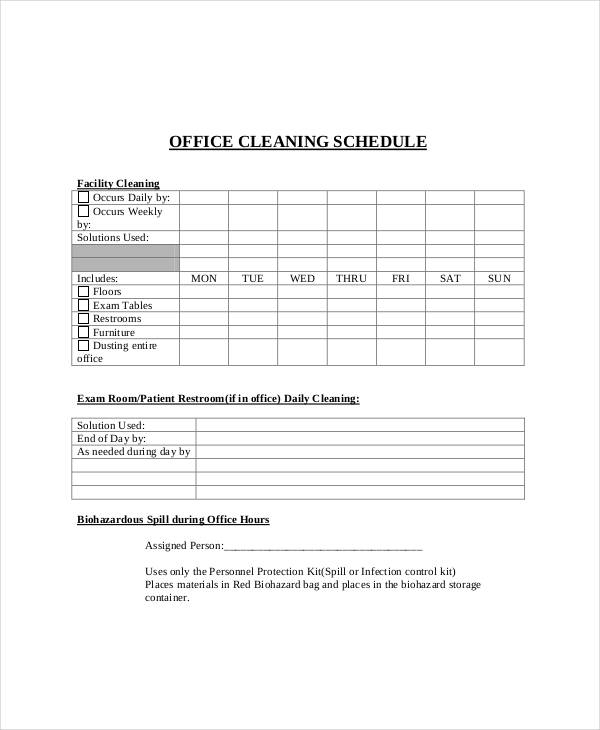
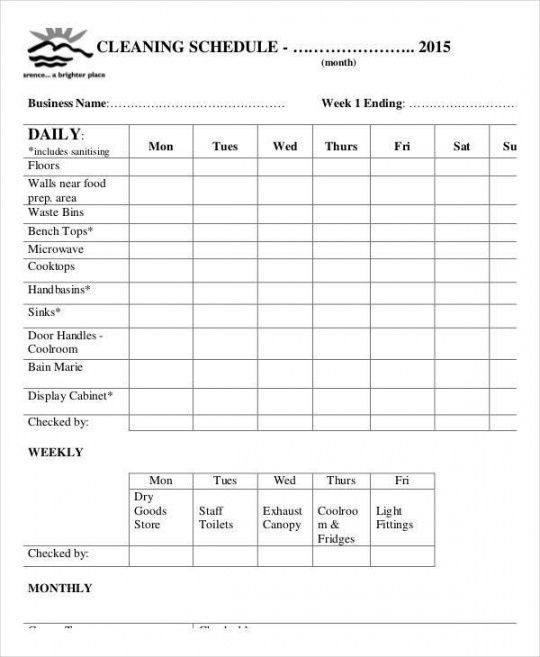
Tips for Successful Implementation
Implementing an office cleaning schedule successfully requires some additional considerations. Here are some tips to ensure a smooth and effective implementation:
- Communication: Communicate the cleaning schedule to all employees and cleaning staff. Provide training and instructions on specific cleaning tasks and expectations.
- Flexibility: Be open to feedback and make adjustments to the schedule as needed. Different seasons or changes in office operations may require modifications to the cleaning routine.
- Regular Evaluation: Regularly evaluate the effectiveness of the cleaning schedule and make improvements if necessary. Solicit feedback from employees and cleaning staff to identify any areas that may need additional attention.
- Provide Adequate Supplies: Ensure that cleaning supplies and equipment are readily available and well-stocked. This includes cleaning solutions, disinfectants, paper towels, gloves, and any other necessary items.
- Lead by Example: As a leader or manager, set an example by maintaining a clean and organized workspace. Encourage employees to take ownership of their work areas and contribute to the overall cleanliness of the office.
In Conclusion
An office cleaning schedule is a valuable tool for establishing a structured and consistent approach to maintaining a clean and healthy workspace. By creating a customized schedule, assigning responsibilities, and displaying it prominently, you can ensure that your office remains tidy, productive, and conducive to employee well-being.
Remember to regularly evaluate and make adjustments to the schedule as needed to meet the changing needs of your office environment.
Office Cleaning Schedule Template – Download